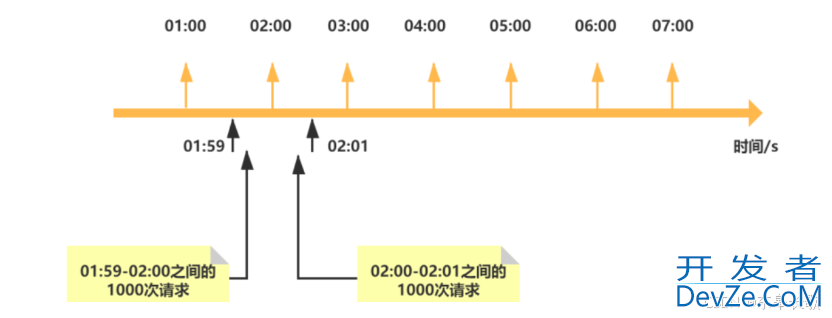目录
- 背景
- 优化
- 日志记录
- 日志查询
- 参考
背景
最近在负责开发维护的一款数据平台,有一个功能是把数据从某个源头数据源(如常规的JDBC数据源,mysql,oracle等)推到目地数据源(还包括企微,MQ等)。一次推送数据就是一个任务,当然需要记录此次推送任务的执行情况,如任务的开始时间,结束时间,任务名称,任务执行状态,任务日志(失败原因),执行人,执行方式(手动执行还是定时触发)。另外,从来源数据源取数,怎么取数是通过SQL指定的,那我们还可以记录一下SQL查询耗时,以及SQL查询条数。总耗时就是任务执行结束时间减去任务开始时间,总耗时肯定大于SQL查询耗时。
统计SQL查询耗时时,还需要考虑到SQL取数的数据js量,假如SQL查询量为1000w,程序不可能一次查询全部数据,然后加工处理并发送到下游目地数据源,故而需要设置分批。假设批次为50w,则SQL查询耗时为20次查询的耗时之和。
扯远一句,项目是接手维护的,一开始的设计开发者是用秒来记录SQL查询耗时,这样一看就不严谨,因为很多SQL查询耗时根本不需要1秒。事实上就算查询耗时超过1s,1.6s和1.7s也是有区别的,故而需要带毫秒来优化记录SQL查询耗时。最后在前端展示时,用小数点来表示毫秒。
很常规,看起来也没有任何问题的数据表设计:
create table execlog (
id bigint(11) auto_increment primary key,
total_sql_time bigint null comment 'SQL执行耗时,单位豪秒',
start_date timestamp default CURRENT_TIMESTAMP not null comment '执行开始时间',
end_date timestamp null comment '执行结束时间',
);
注:total_sql_time注释单位毫秒,以及程序记录单位是后来优化调整的。
某次任务执行记录截图如下,发现总耗时为0秒,而查询耗时为146毫秒。这显然不符合逻辑。

优化
优化思路也不难,就是任务开始时间需要记录到毫秒级别,改进后的表结构为:
create table execlog (
id bigint(11) auto_increment primary key,
total_sql_time bigint null comment 'SQL执行耗时,单位豪秒',
start_date timestamp(3) default CURRENT_TIMESTAMP(3) not null comment '执行开始时间',
end_date timestamp(3) null comment '执行结束时间',
);
值得注意的是,MySQL直到版本5.6(不太确定)才支持,如何知道自己使用的MySQL Server版本是否支持timestamp(3),执行语句即可验证,没有报错并且返回毫秒数表示支持:select now(3);
优化上php面截图中的日志记录问题分为两个步骤,即日志记录和日志显示。
日志记录
增加一个取当时时间精确到毫秒的静态方法:
public static final String COMMON_DATE_WITH_MILLI_SECOND = "yyyy-MM-dd HH:mm:ss:sss";
public static String getNowWithMilliSecond() {
SimpleDateFormat sdf = new SimpleDateFormat(Constant.COMMON_DATE_WITH_MILLI_SECOND);
return sdf.format(new Date());
}
表结构如上改进后,发现start_date记录没有问题,带3位小数点。但end_date记录不到小数点,即未记录到毫秒,于是怀疑表结构不对。
某次任务执行肯定会有start_date,故而设置为not null,但会因发布,或调试中断等各种原因导致记录不到end_date时间点,因此字段不能设置为not null。
落不到数据,怀疑需要给一个默认值,于是如下改表结构
create table execlog (
id bigint(11) auto_increment primary key,
start_date timestamp(3) default CURRENT_TIMESTAMP(3) not null comment '执行开始时间',
end_date timestamp(3) default CURRENT_TIMESTAMP(3) null comment '执行结束时间'
);
但是还是记录不到结束时间的毫秒数。
此时只能好好看代码,end_date是在任务结束(不管是正常结束还是异常结束,异常结束在finally语句块)时updateExecLog更新:
<update id="updateExecLog" parameterType="com.xy.cloudiview.common.po.ExecLog">
UPDATE execlog t
<set>
<if test="errorLog != null">
t.error_log = #{errorLog},
</if>
t.end_date = now(),
</set>
WHERE t.id = #{id}
</update>
此处已经指定end_date取数为now(),肯定不会记录到毫秒数的。需改成t.end_date = now(3),。
再看另外一个updateExecLog更新语句:
<update id="updateByPrimaryKeySelective" parameterType="com.xy.cloudiview.common.po.ExecLogWithBlobs">
update execlog
<set>
<if test="endDate != null">
end_date = #{endDate,jdbcType=TIMESTAMP},
</if>
</set>
where id = #{id,jdbcType=BIGINT}
</update>
貌似找到一点问题解决思路,开启MySQL日志打印功能:
myBATis:
configuration:
log-impl: org.apache.ibatis.loggphping.stdout.StdOutImpl
一个很无厘头的尝试:
<if test="endDate != null"> end_date = #{endDate,jdbcType=TIMESTAMP(3)},</if>
报错:
MyBatisSystemException: nested exception is org.apache.ibatis.builder.BuilderException: Error resolving JdbcType. Cause: Java.lang.IllegalArgumentException: No enum constant org.apache.ibatis.type.JdbcType.TIMESTAMP(3)
at java.lang.Enum.valueOf(Enum.java:238)
那就把jdbcType去掉:
<if test="endDate != null">
end_date = #{endDate},
</if>
打印日志如下:
JDBC Connection [com.mysql.cj.jdbc.ConnectionImpl@7ef24deb] will not be managed by Spring
==> Preparing: update execlog SET end_date = ? where id = ? ==> Parameters: 2022-10-12 17:08:13:013(String), 31542157(Long)nested exception is com.mysql.cj.jdbc.exceptions.MysqlDataTruncation: Data truncation: Incorrect datetime value: '2022-10-12 16:05:47:047' for column 'end_date' at row 1
也就是说,当MyBatis遇到MySQL timestamp(3)时,MyBatis上面这种写法支持不了。
于是只能换一种写法:
<update id="updateByPrimaryKeySelective" parameterType="com.xy.cloudiview.common.po.ExecLogWithBlobs">
update execlog
开发者_数据库 <set>
<if test="modelId != null">
model_id = #{modelId,jdbcType=BIGINT},
</if>
end_date = now(3),
</set>
where id = #{id,jdbcType=BIGINT}
</update>
解决问题。也不需要在Java代码层设置带毫秒数的当前时间。
此时,回头看看第一个截图,里面有一个日志类型的字段,文章开头没有描述。这里解释一下,因为平台有多种类型的任务,涉及多个maven Module模块和多个表,于是有多个execlog的insert和update语句。
再来看一个insertExecLog语句,省略无关字段,这种方法是MyBatis插件generator自动生成的,也没有任何问题,就是看起来非常冗余,两个<trim>语句块,再加上每个<trim>语句块里面每个字段都有<if>语句块条件判断语句:
<insert id="insertSelective" parameterType="com.xy.cloudiview.common.po.ExecLogWithBlobs">
<selectKey resultType="java.lang.Long" keyProperty="id" order="AFTER">
SELECT LAST_INSERT_ID()
</selectKey>
insert into execlog
<trim prefix="(" suffix=")" suffixOverrides=",">
<if test="startDate != null">
start_date,
</if>
</trim>
<trim prefix="values (" suffix=")" suffixOverrides=",">
<if test="startDate != null">
#{startDate,jdbcType=TIMESTAMP},
</if>
</trim>
</insert>
维护项目的一个默认的潜规则,就是除非没有大的问题,尽可能不要大面积改动代码,大面积改动还不如重构,重构的前提是对项目非常了解。
当然这个地方只是一个MyBatis方法而已,还达不到重构那个深度。但是我也是想着尽可能不要改android动太多,于是改动如下:
<insert id="insertSelective" parameterType="com.xy.cloudiview.common.po.ExecLogWithBlobs">
<selectKey resultType="java.lang.Long" keyProperty="id" order="AFTER">
SELECT LAST_INSERT_ID()
</selectKey>
insert into execlog
<trim prefix="(" suffix=")" suffixOverrides=",">
start_date,
</trim>
<trim prefix="values (" suffix=")" suffixOverrides=",">
now(),
</trim>
</insert>
报错信息就不贴出来了,原因还是当MyBatis遇到MySQL timestamp(3)时,MyBatis上面这种写法不支持。
改动方法:
删除start_date对应的if判断语句块,让MySQL的default CURRENT_TIMESTAMP(3)来使其生效
使用如下方法:
<insert id="saveExecLog" parameterType="com.xy.cloudiview.common.po.ExecLogWithBlobs">
INSERT INTO execlog(start_date) VALUES (now(3))
</insert>
日志查询
改进前的执行日志列表页查询语句为:
select DATE_FORMAT(t.start_date,'%Y-%m-%dhttp://www.devze.com %H:%i:%s') as startDate, TO_SECONDS(t.end_date)-TO_SECONDS(t.start_date) as totalTime from execlog
改进后的:
select SUBSTRING(DATE_FORMAT(t.end_date, '%Y-%m-%d %H:%i:%s.%f'), 1, 23) AS endDate, TIMESTAMPDIFF(MICROSECOND, t.start_date, t.end_date) / (1000 * 1000) AS totalTime from execlog
最后实现的效果是:

参考
get-milliseconds-with-date-format-in-mysql
https://stackoverflow.com/questions/26299149/timestamp-with-a-millisecond-precision-how-to-save-them-in-mysqlhttps://stackoverflow.com/questions/20520443/mysql-timestamp-to-default-null-not-current-timestamp到此这篇关于浅谈MySQL timestamp(3)问题的文章就介绍到这了,更多相关MySQL timestamp(3)内容请搜索我们以前的文章或继续浏览下面的相关文章希望大家以后多多支持我们!









 加载中,请稍侯......
加载中,请稍侯......
精彩评论